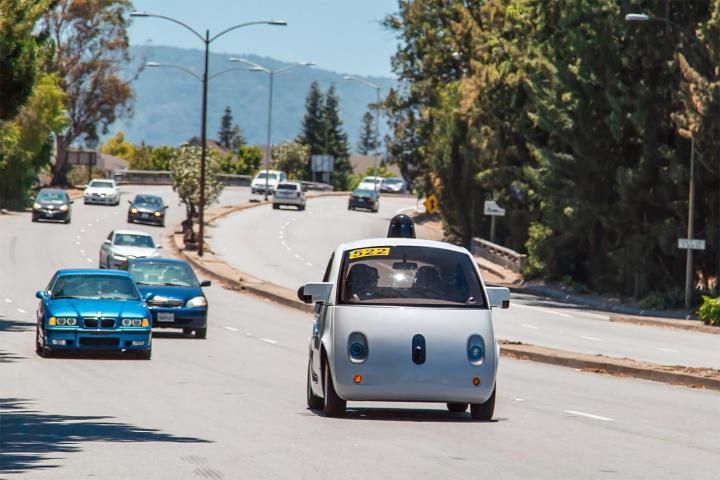
It’ll be the diminutive vehicle’s first ride outside of the Golden State as Google continues its quest to create a safe and reliable robo-car.
Residents of Austin have a good chance of spotting the car in the next few weeks, Google told the Wall Street Journal.
To make sure everything goes according to plan and ensure the vehicle doesn’t malfunction or come to any harm, the pod will have a passenger/driver inside keeping an eye on things. And yes, the car does include a steering wheel, so if, for whatever reason, it needs to be taken out of driverless mode, there’ll be no problem getting it to its intended destination.
Google already has experience of testing its driverless tech on the roads of Austin, though on those occasions the kit was fixed to Toyota Prius and Lexus RX hybrids.
The latest development marks the first time for one of Google’s “homemade” pods, which first hit the road in June, to venture outside of its Mountain View neighborhood.
Google says that taking its driverless technology further afield lets it see how the software handles various road conditions and terrain. It also gives people in others parts of the country the chance to drive alongside such vehicles, with Google keen to get feedback on how regular road users feel about the technology.
The company introduced its self-driving pod car to Austin folks at a special event over the weekend. According to a blog post describing the event, interested kids said the car resembles a variety of objects, including “a gumdrop, an owl, a rock with a face on it, an ant, a bug, a moving living room, a computer mouse, a car with top hat… and our personal favorite: ‘the future.'”
There were plenty of questions too, like “does it have windshield wipers?” (yes, though you’ll find them on the car’s all-important sensors), and “does it have an eject button?” (er, no, but that would really be quite something.)

